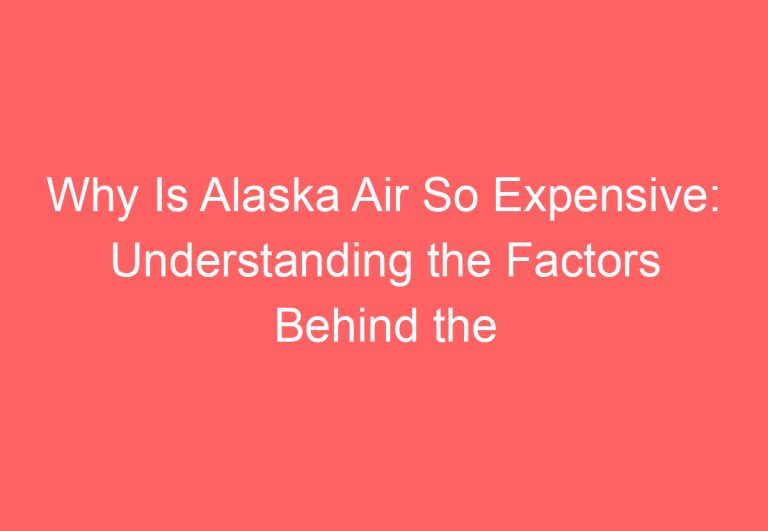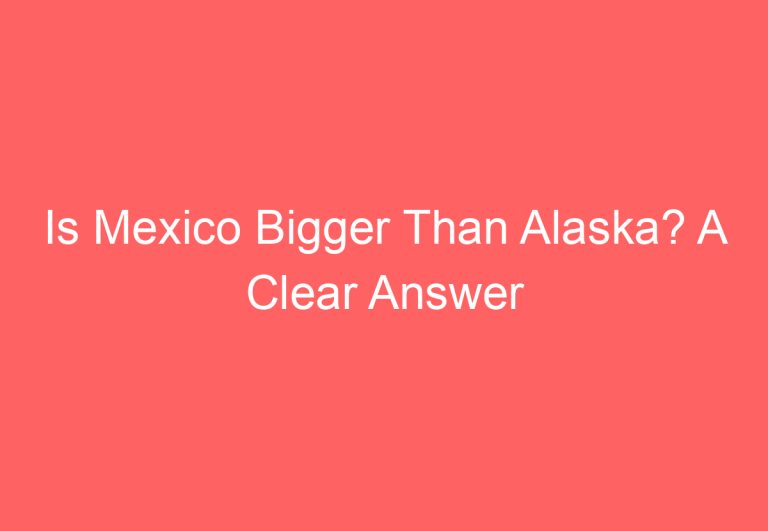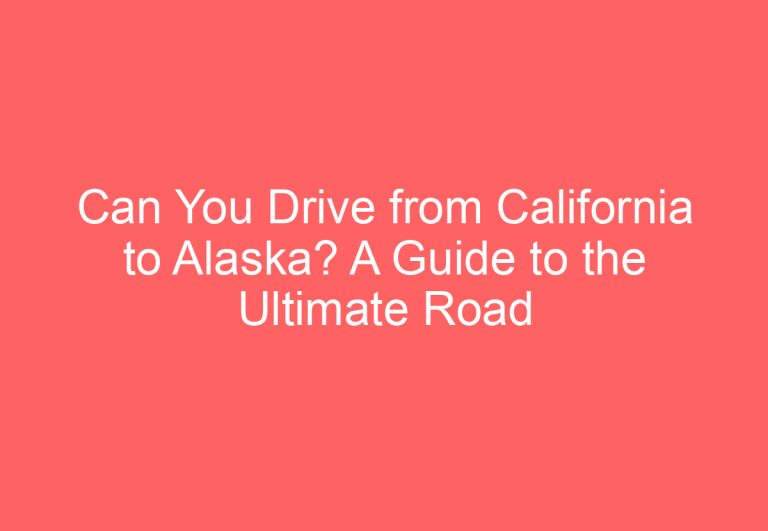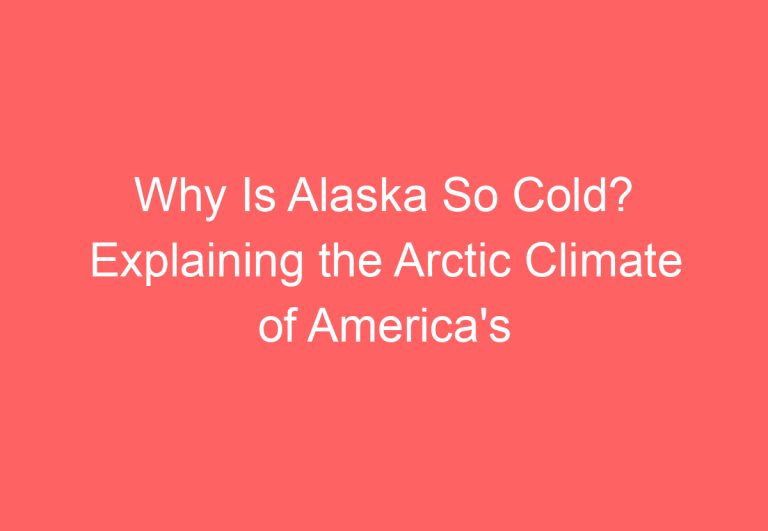Is Alaska Connected to Canada? Exploring the Geographical Relationship between the Two Countries
Alaska is a state located in the northwestern region of North America. It is the largest state in the United States, and it is known for its rugged terrain, glaciers, and wildlife. Due to its location, many people wonder if Alaska is connected to Canada. The answer is yes and no, and it depends on how you define “connected.”

Geographically, Alaska is connected to Canada. It shares a long border with Canada to the east, and the two countries are separated by the 141st meridian west. However, politically, Alaska is not part of Canada. It is a state in the United States, and it has been since 1959. Alaska was purchased from Russia in 1867 for $7.2 million and was made a U.S. territory. It became the 49th state in the United States on January 3, 1959.
Geographical Connection and Historical Context

Alaska-Canada Border and Its Significance
Alaska shares a land border with the Canadian provinces of British Columbia and Yukon Territory. The border between Alaska and Canada stretches over 1,538 miles, making it the longest international border between two countries. The border is significant because it serves as a political and economic boundary between the United States and Canada. It is also a popular tourist destination, with many visitors crossing the border to explore both countries.
Historical Purchase and Statehood
In 1867, the Russian Empire sold Alaska to the United States for $7.2 million. At the time, the purchase was criticized by many Americans who believed that the territory was too remote and too expensive. However, the purchase proved to be a wise investment, as it gave the United States access to valuable natural resources such as gold, timber, and oil. Alaska became a U.S. territory in 1912 and was declared a state in 1959, becoming the 49th state of the United States.
Physical Geography and Climate
Alaska is the largest state in the United States, with an area of 663,268 square miles. It is located in the northwestern region of North America and shares borders with Canada, the Pacific Ocean, and the Arctic Ocean. The state has a diverse geography, ranging from dense forests and tundra to permafrost and glaciers. Alaska also has a varied climate, with temperatures ranging from -80°F in the winter to 100°F in the summer.
The Alaska Range, which runs from the southeastern coast of Alaska to the central part of the state, is one of the most prominent features of the state’s geography. The range includes many of the state’s highest peaks, including Denali, which is the highest peak in North America. The state’s coastline is also a significant feature, stretching over 6,640 miles and bordering the Beaufort Sea, the Bering Strait, the Gulf of Alaska, the Bering Sea, and the Chukchi Sea.
Overall, the geographical connection between Alaska and Canada is significant due to the shared border and the historical context of the purchase and statehood. The physical geography and climate of Alaska also play a significant role in the state’s identity and economy.
Economic and Strategic Importance

Alaska and Canada share a long and complex history, with both countries sharing a border that stretches over 1,500 miles. The relationship between the two countries is crucial to the economic and strategic interests of both nations.
Natural Resources and Industry
Alaska is home to vast natural resources, including oil, gold, and other minerals. These resources are essential to the economic growth of the state and the country as a whole. Canada, on the other hand, is one of the world’s largest producers of natural resources such as lumber, minerals, and oil.
The mining industry is a significant contributor to the economy of both Alaska and Canada, with gold being one of the most valuable minerals in both regions. The state of Alaska has several gold mines, including the Fort Knox Mine, which is one of the largest gold mines in the world. Similarly, Canada has several gold mines, including the Red Lake Mine, which is one of the largest gold mines in the country.
Transportation and Access
Transportation is a key factor in the economic and strategic importance of Alaska and Canada. The Alaska Highway, which stretches over 1,500 miles from Dawson Creek, British Columbia, to Delta Junction, Alaska, is a vital transportation link between the two countries. The highway provides access to Alaska’s major cities, including Anchorage, Juneau, and Fairbanks, and serves as a critical link for the transportation of goods and services.
Alaska’s location also makes it a strategic location for the United States military. The state is home to several military installations, including the Joint Base Elmendorf-Richardson, which is the largest military installation in Alaska. Additionally, the state is home to several national parks, including the Alaska Peninsula National Wildlife Refuge and the National Petroleum Reserve–Alaska.
In conclusion, the economic and strategic importance of Alaska and Canada cannot be overstated. Both countries rely on each other for access to natural resources, transportation, and military defense. The relationship between the two nations will continue to evolve as they work together to address the challenges facing the region.
Frequently Asked Questions

Can you drive from Alaska to the rest of the United States without going through Canada?
No, it is not possible to drive from Alaska to the rest of the United States without going through Canada. Alaska shares its land border with the Canadian provinces of British Columbia and Yukon Territory. Therefore, if you drive to Alaska, you must drive through Canada.
What country does Alaska belong to?
Alaska belongs to the United States of America. While it is connected to Canada geographically, it is politically part of the United States.
Why is Alaska part of the United States instead of Canada?
Alaska was acquired by the United States from Russia in 1867 for $7.2 million. At the time, the United States was interested in expanding its territory, and Alaska presented an opportunity for that. Additionally, there were concerns that Great Britain might try to take control of Alaska, so the United States moved quickly to acquire it.
Does Alaska share a land border with Canada?
Yes, Alaska shares its land border with the Canadian provinces of British Columbia and Yukon Territory.
When did the United States acquire Alaska, and from whom?
The United States acquired Alaska from Russia in 1867 for $7.2 million. The area remained almost unchanged until 1912, when it was designated as an administrative territory. Finally, Alaska was proclaimed as a state of the United States on January 3, 1959.
Is it possible to travel from Alaska to Russia?
Yes, it is possible to travel from Alaska to Russia, but it requires crossing the Bering Strait, which is about 55 miles wide at its narrowest point. However, this is not a common mode of transportation, and most people travel to Russia by air.






